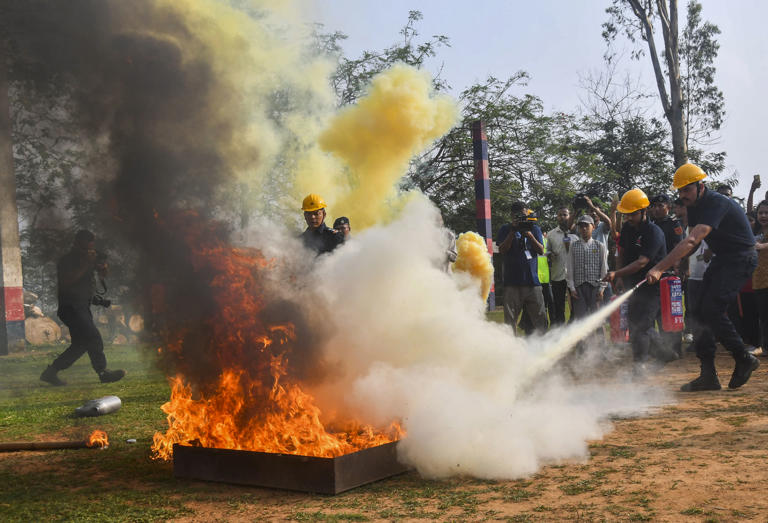Nationwide Mock Drills Conducted Across India Simulating Air Raids, Fire Emergencies and Hostile Attacks
In an unprecedented nationwide effort to bolster civil defence preparedness, multiple states and Union Territories across India conducted large-scale mock drills simulating a range of hostile scenarios including air raids, fire emergencies, search and rescue operations, and emergency evacuations. The nationwide civil defence mock drill, titled ‘Operation Abhyaas’, was carried out under the directive of the Union Ministry of Home Affairs (MHA) in response to the evolving security landscape and the increasing threat of terror attacks.
The drills come just hours after the Indian military launched Operation Sindoor, targeting terror infrastructure across the Line of Control in Pakistan and Pakistan-occupied Kashmir (PoK). This strong military response followed the April 22 terror attack in Pahalgam, Jammu and Kashmir, which claimed the lives of 26 civilians and was perpetrated by the terror outfit The Resistance Front. The Ministry of Home Affairs had announced the drills on Monday, urging all states and Union Territories to participate in what is being regarded as one of the largest civil defence exercises in recent years.
Mock drills were actively conducted in major states and Union Territories including Delhi, Punjab, Haryana, Rajasthan, Uttar Pradesh, Gujarat, Maharashtra, Karnataka, Tamil Nadu, Kerala, Andhra Pradesh, Telangana, Odisha, Bihar, Jharkhand, West Bengal, Assam, Mizoram, Tripura, Nagaland, Sikkim, Arunachal Pradesh, and Manipur. These exercises aimed to train civilians and evaluate the responsiveness of emergency services to potential wartime scenarios and hostile attacks. Key objectives included testing evacuation plans, crash blackouts, response time to air-raid sirens, camouflaging of vital infrastructure, and readiness of civil defence volunteers.
In New Delhi, over 55 locations were involved in the simulation. Sirens were sounded across the city, prompting residents to evacuate to designated safe zones. PCR vans and fire engines were strategically deployed, and Delhi Fire Services used cranes to simulate rescue operations from high-rise buildings. One of the notable highlights was a full-fledged drill at Indira Gandhi International Airport, where fire brigade teams, doctors, and ambulances responded swiftly to the mock emergency. Schools across the capital also participated, with students and teachers engaging in safety protocols such as sheltering under desks, switching off electrical appliances, and conducting orderly evacuations.
In a dramatic move to replicate wartime conditions, a 15-minute blackout was executed in the heart of the national capital from 8:00 pm to 8:15 pm. This included key areas such as Lutyens’ Delhi, where Parliament House, India Gate, foreign embassies, and major government buildings are located. The blackout, managed by the New Delhi Municipal Council (NDMC), was a symbolic and strategic exercise in simulating emergency power outages that may occur during a real crisis.
Similar efforts were mirrored across other parts of the country. In Mizoram’s capital Aizawl, a two-kilometre stretch was designated for drills, accompanied by a five-minute blackout at 6:30 pm to mimic wartime power cuts. These exercises also involved the cleaning and inspection of bunkers and trenches, civilian training for air raids, and ensuring that local administrative bodies are capable of managing large-scale emergencies.
Close to 300 ‘civil defence districts’ across India—home to critical installations such as nuclear plants, military bases, oil refineries, and hydroelectric projects—participated in the drills. The drills were meticulously designed to ensure a coordinated and rapid response to modern-day threats, making them a crucial component of India’s evolving national security strategy.
The scale and coordination witnessed during Operation Abhyaas underline the government’s focus on ensuring national resilience against complex threats and hostile acts. These mock drills not only trained civilians and tested systems but also sent a strong message of preparedness and solidarity in the face of terrorism.
For video news, visit our YouTube channel THE OLIGO.

